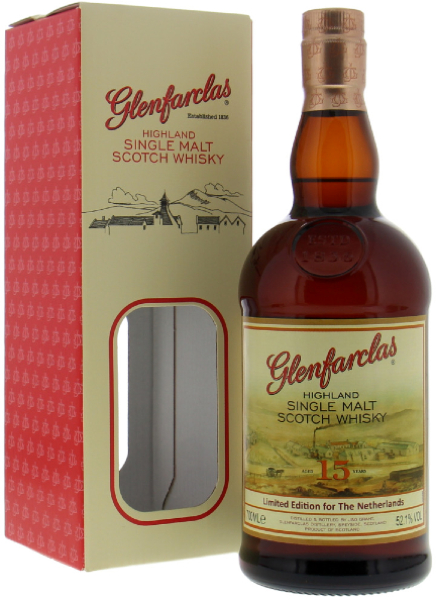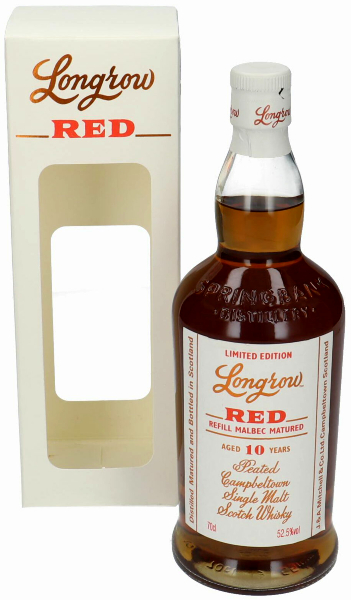Earlier we reviewed two Bimbers matured in American oak casks that previously held another Whiskey. One Bourbon and one Rye. Both, together with American oak casks that previously held a Tennessee Whiskey, (like Jack Daniel’s and George Dickel), should be the type of casks that showcases the Bimber spirit best, especially when they are refill casks. This will become even more clear in my next Bimber review. That review is not yet planned, but I promise, you won’t have to wait all to long for it, just not right after this one. Just bear with me on this one.
But wait a minute, what about an American oak cask that previously held nothing more than air and maybe some water? What about a freshly made American oak cask, that has only been toasted, as they all are? Yes virgin oak. Using a new cask is not very popular in the Whisky world, and for a long time it was quite unheard of. Sure there were Whiskies made that in part used new cask, but not a lot per batch. When looking at Bimber, I was quite surprised virgin oak cask editions perform really well in the secondary market. Especially in the home (UK) market people seem to dish out some serious amounts of dough for a virgin oak Bimber. Well, since Master Quill is based in mainland Europe, the secondary market for virgin oak Bimbers has not yet reached the levels like that of the UK, so, as usual I snapped some up at a German auction. Yes I did pay somewhat more than for both the Belgium and The Netherlands editions, but nowhere near the current UK prices.
 Color: Full gold, almost orange.
Color: Full gold, almost orange.
Nose: Creamy, buttery (Werther’s Original), with Bimbers marker: Cinnamon. Very fragrant stuff this is, slightly perfumy. Early on some hints of apple aroma close to Calvados, these are gone or overpowered lateron. Bigger and fatter than the Ex-Bourbon and the Ex-Rye reviewed earlier. Very fresh, pleasant and well balanced. Wood and sawdust. Vanilla ice-cream with a leafy and green note to it. Old cardboard and some pencil shavings. Even when smelling, the Whisky becomes less fatty. It’s dryer now. Less “big”. Still some dust, more cinnamon and some indistinct wood related spices which are easy to spot yet hard to identify. To me this one seems somewhat less complex and layered than both the Ex-Bourbon and the Ex-Rye. It is almost like the fruit wants to come out, but doesn’t manage to make it through the creamy cloak, (the vanilla, the butter and the ice-cream), that stretches over it. So this a pretty straight forward expression. Good again, yet a bit simpler. Sniffing this deeply, beautiful abundant wood notes and in no way does it smell of alcohol, similar with the other two. This is wood perfume (hints of vegetal oil and an old bar of soap). Hints of sandalwood, just less intrusive than the sandalwood coming off some men’s eau de toilette. The nose develops over time, becoming more complex with added notes of licorice combined with fresh butter. So all is good. Whereas in a tasting session with both others, the complexity just seems less, it does show multiple personalities over different sessions, so maybe this is a different way of complexity after all, or is it just me that is different?
Taste: Fruity onset, somewhat sweet. Wood, wax and some bitterness cloaked by the fruit and creaminess. The slight bitter note is paired with some licorice. Next the char and some masked (fruity) sweetness. Hints of cola? I expected it to be more creamy though, but the wood does dominate. Next some cookie dough, with a (fruity?), acidic note on top. Here I notice again that the nose seems more refined and developed after taking the first sip. Strange combination of sappy oak, sweet mint candy and carbon powder (the charred oak). A dishwater like bitterness. Usually it is the florality of dishwater that can be smelled/tasted, here it is the bitterness of soap. Just a hint, just making the whole more interesting rather than disgusting, because really, dishwater? Definitely less creamy and fatty than I’ve come to expect from the nose alone yet still bigger than “the other two”. By now the nose does evolve a lot, and again becoming more than just good.
Virgin oak casks are made of charred American oak, and since no other liquid has been interacting with the (charred) wood, a cask like this will always properly colour the Whisky. Virgin oak is often looked at with some concern, and thus it was never a common practice when it came to producing Single Malt Whisky. But after the Wine casks, the Port casks, the Rum casks and so on, it was just a matter of time to broaden the wood palette, and start experimenting with virgin oak. Why not? The market demands it, it wants choice! It is yet another marriage between spirit and “a wood” which is essentially what Whisky is. Is it better than the others, no it’s not, it’s different and it is yet another take, and often the results are mediocre at best, just like the early Wine casked Whiskies. Sgtill a lot to learn here I guess. For Bimber though, virgin oak seems to work pretty well, the quality and the character of the liquid just work with the virgin oak. Bimber aficionado’s know this, as I said earlier, because virgin oak Bimbers do very well in the secondary market, much better than its Bourbon and Rye counterparts. Is it better than those, no it is not, I say it again, but it is a welcome variant, but for a lot less you can purchase an Ex-Bourbon Bimber or an Ex-Rye one which are also much less scarce and offer at least the same amount of quality, just with a different overall feel.
Final remark. I’ve come to find that to get all out of a Bimber, you need to give it peace and quiet and also give it some time. Comparing the three: Virgin has the more straightforward nose, yet very chewy and likeable. Rye is the most complex, distinct and fragile. The Bourbon is somewhere in between the two, less fragile but much closer to the Rye than the virgin oak, so no surprises there really. The Virgin oak is actually a different puppy, and a big puppy at that. Based on the taste, the Virgin is again a different puppy, way more creamy and sweeter, and more about the cask than the other two, which show more of the (quality of the) spirit. And tasting all three back and forth, it seems to me the Rye seems to have the best balance of the three, as well as its delicate complexity. So If I had to buy just one: The Rye. If I could pick two: The Rye + The Virgin. They are not created equal, where the Rye and the Bourbon almost are. If I could only get the Bourbon, no problem whatsoever. Both the Bourbon and the Rye are quite similar, with enough to set them apart in the details, today I prefer the Rye, but tomorrow might be different. The virgin, however, is a welcome “distraction” or better: a variation on the Bimber theme. Especially after trying the Bourbon and the Rye back an forth to pick a favourite (emptying both bottles in the process), and actually, the Virgin is also a very good dram. All three are definitely worthy of their spot under the sun, and on my lectern.
Points: 87
 Color: Light orange gold.
Color: Light orange gold. Color: Light Gold.
Color: Light Gold. Color: Pale White Wine
Color: Pale White Wine Color: White Wine
Color: White Wine Color: Light gold.
Color: Light gold. Color: White Wine.
Color: White Wine. Color: Copper gold.
Color: Copper gold. Color: Vibrant orange brown, like a bourbon. No pink Red Wine hue.
Color: Vibrant orange brown, like a bourbon. No pink Red Wine hue. Color: Orange Gold.
Color: Orange Gold.